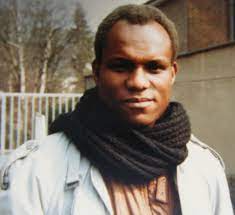Henry Tayali Biography, Age, State of Origin

Tayali was born on 22 November 1943 to Edward Nkole Tayali (1914–1995) and Esnati Mumba Tayali (née Chola, 1923–1963) in Serenje in the British Colony of Northern Rhodesia (later to become Zambia), a town near the site of the Nsalu 12,000-year-old rock and cave paintings. His father, the first born of five children, had won a scholarship to study at a South African University, but never took it up because his own mother died suddenly, and he chose to stay and look after his younger siblings. In order to support them, Tayali’s father emigrated from Northern Rhodesia to work in Bulawayo in Southern Rhodesia, ending up in the Department of Housing and Amenities
Marriage and family
In 1971, he married Regina Mary Birungi Kivubiro while still in Uganda, and just before returning to Zambia and they had a son in 1972, Rhodrick Tayali. Regina died in 1976. Tayali had a daughter in 1980, Katwishi Alanda Tayali, followed in 1983 by a son, Chaswe Angio Tayali, with Rosemary Kaluwa, whom he later married. Tayali’s son Rhodrick is an object and interior designer – Diploma-Designer (FH) – by training and a graduate of the Fachhochschule Aachen, and is also an accomplished artist in his own right.
Tayali died on 22 July 1987 while visiting his eldest son and family friends the Moiks / Moik-Becker in Aachen, West Germany, after attending his youngest brother’s wedding in Southampton, England. He was buried at Leopards Hill Cemetery in Lusaka.
Career
When the family was in Bulawayo, Tayali’s natural talent was spotted early on by Alex Lambeth, who ran the African Affairs Department of Bulawayo City Council. Lambeth encouraged Tayali to pursue art as a career, and enrolled him on an artwork course. This led to Henry’s first exhibition in Bulawayo at the age of fifteen. His painting career took off after that, and using water colours, Tayali begun to produce varied, vibrant, dynamic works such as Sunset Road and Destiny. He also produced sculptures – amongst them The Graduate at the University of Zambia campus in Lusaka, as well as silk-screens and woodcuts, a few of these were printed as greeting cards and sold through newsagents and book stores. Tayali held exhibitions in Lusaka, Bulawayo, Aachen, Düsseldorf, London (Commonwealth Institute, 1983), Alberta, and Toronto as well as in Zambia, where a few of his exhibitions were opened by Kenneth Kaunda, the first President of Zambia. He was associated with artists, authors and politicians, including Simon and Cynthia Zukas,[18] Andrew Sardanis (whose property at Chaminuka houses a collection of Tayali’s paintings and sculptures amongst others) and American Professor
Legacy
Tayali was one of the first Africans to work tirelessly to raise the profile of indigenous African art and crafts in Zambia, Africa, and the world through workshops, conferences, discussions, exhibitions, newspaper articles, magazines and television appearances
He played a very pivotal and influential role in cultural and artistic development in Zambia. and Africa. He was president of the International Association of Artists in Zambia (which fell under UNESCO), and represented Zambia at various international symposia and conferences. He also headed the Art Centre Foundation, the National Craft Council of Zambia, and the National Museums Board.
In reflection of his work and legacy, it has been suggested that his work Destiny is a historical piece of art, and not just an eye-catcher.
In 1989, over seventy artists from around Zambia convened at Evelyn Hone College of Applied Arts and Sciences, and formed the Zambia National Visual Arts Council (VAC) in his honour – as the national organisation for visual artists to be run by artists in Zambia. They named its headquarters at the Lusaka Showgrounds “The Henry Tayali Visual Art Centre” The Visual Arts Council started its operations in 1991, but the Visual Arts Centre was officially opened later in 1995. It hosts art competitions, exhibitions, and seminars and it is one of the must-sees on the Zambian tourist circuit. The Ngoma Awards, sponsored by the National Arts Council of Zambia confers the “Henry Tayali Award” for Best Two-Dimensional Visual Artist.[50]